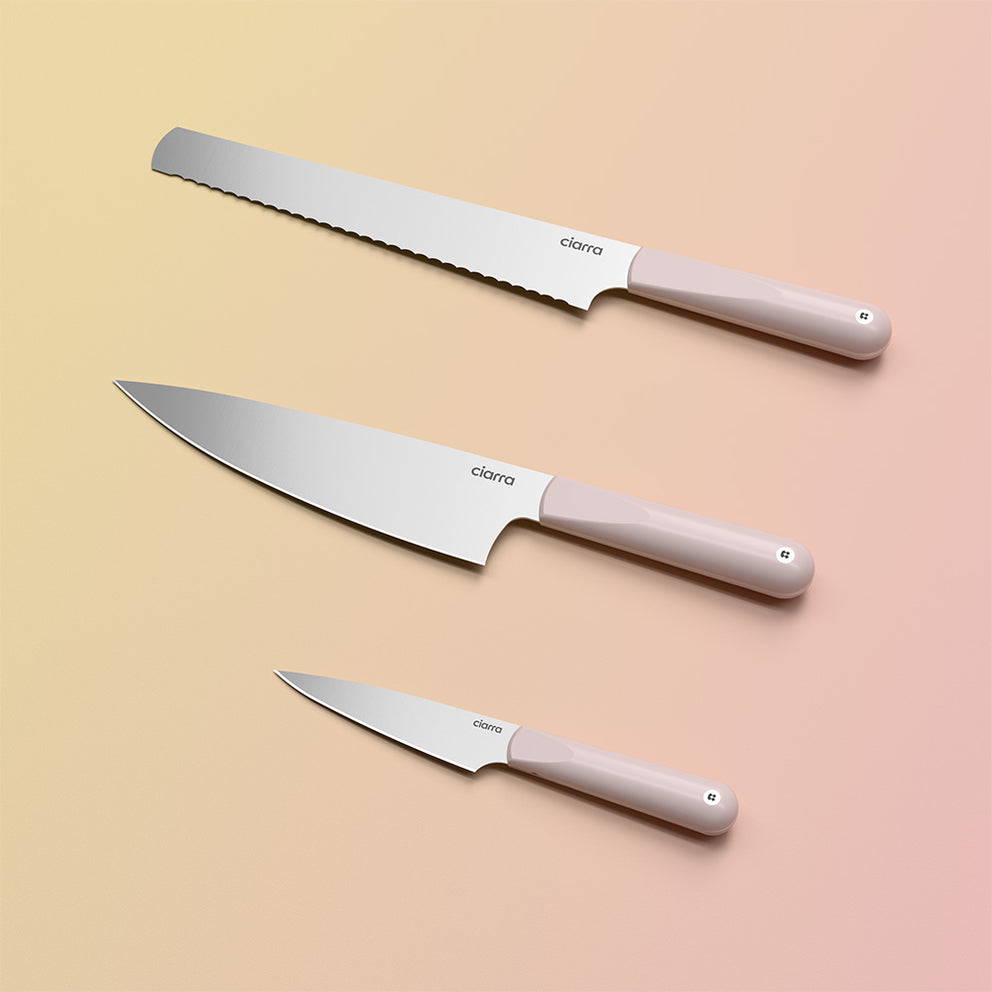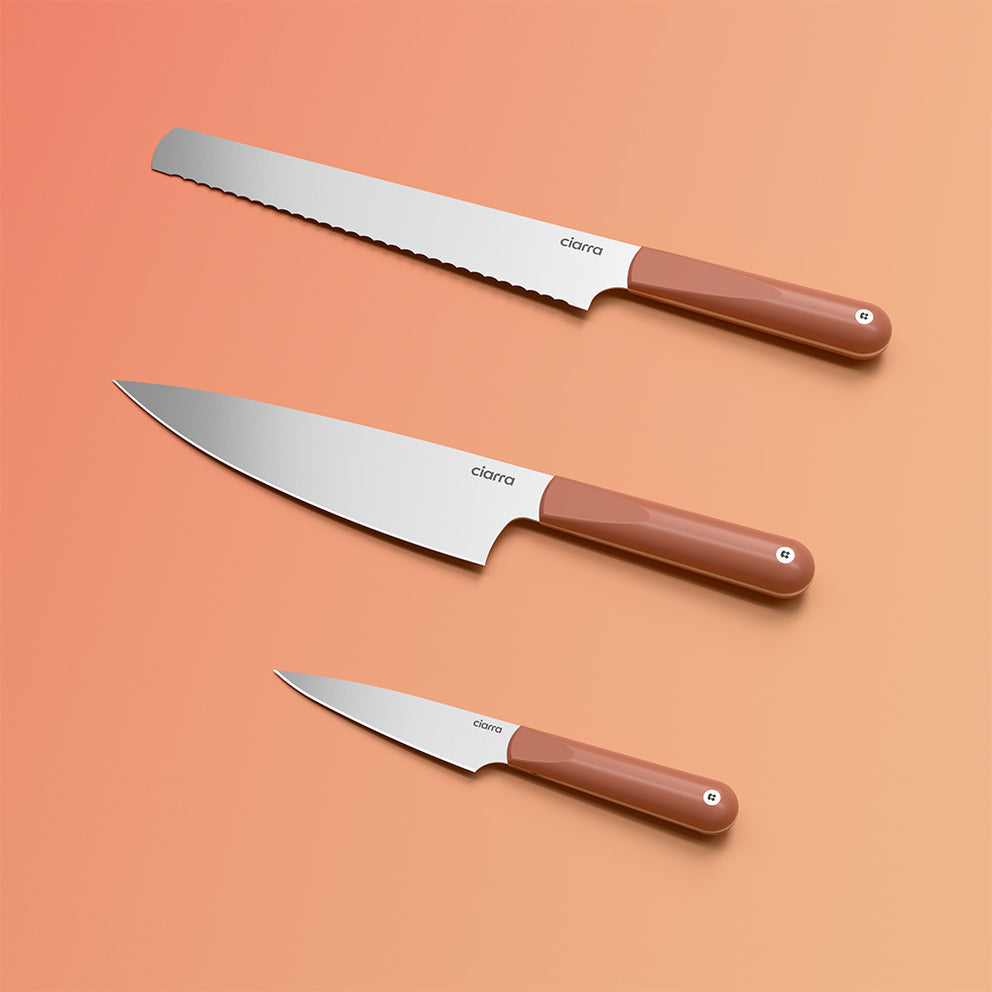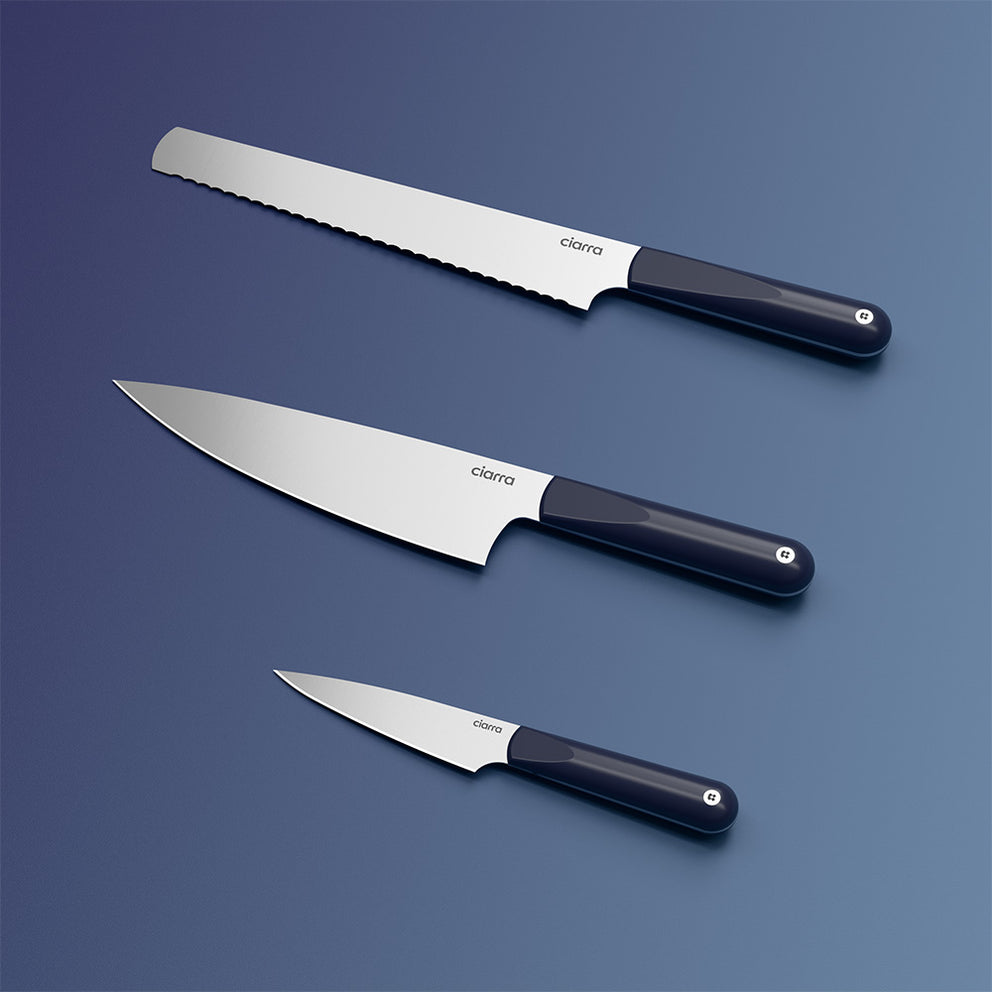Buying High-Quality Kitchen Knives
At Knivesandtools, we make it easy to find top-quality kitchen knives. Whether you're an amateur or a professional chef, our selection of affordable and premium knives meets all your culinary needs.
Kitchen Knife Prices: From Budget-Friendly to Premium
Kitchen knife prices can vary based on brand, steel quality, and type. We are committed to offering value and durability at every price point, ensuring you'll find exactly what you're looking for at Knivesandtools.
Which Knives Do You Need for Your Kitchen?
Kitchen knives come in various shapes and sizes, each designed for a specific task. Here are some essential knives every kitchen should have:
- Chef’s Knives
Essential for chopping vegetables, julienning, or slicing meat, the chef's knife is the most versatile and frequently used knife in any professional kitchen. - Bread Knives
Perfect for cutting bread, bagels, and baked goods, bread knives also excel at slicing large fruits and vegetables like pumpkins or melons. The sawing motion provides great control. - Utility Knives
A versatile all-purpose knife that can function as a small chef’s knife or a larger peeling knife, perfect for various kitchen tasks. - Paring Knives
Ideal for everyday tasks like peeling vegetables and fruit, a paring knife offers precision and ease, making food prep a breeze. - Knife Sets
Buying a knife set is an affordable way to equip your kitchen with all the essential knives, offering a cohesive collection for all your culinary needs.
Types of Steel for Kitchen Knives
The quality of steel in a kitchen knife affects its sharpness, durability, and maintenance. Kitchen knives can be made from several materials, including:
- Damascus Steel
- Stainless Steel
- Carbon Steel
- Ceramic
No knife stays sharp forever. The quality of the knife determines how long it will stay sharp before needing to be sharpened. We recommend maintaining your knives properly to delay sharpening and ensure long-lasting performance.
What is the Best Material for Knives
The best material for knives depends on the intended use, but high-carbon stainless steel is often considered the best overall. It combines durability, sharpness, and rust resistance. For premium knives, damascus steel and ceramic are also popular for their sharpness and aesthetic appeal, though they can be more brittle.
Baking Soda Paste: Mix baking soda with water, apply it to the rust, and scrub gently with a soft brush or sponge.
White Vinegar Soak: Soak the blade in white vinegar for a few hours, then scrub off the rust with a sponge or cloth.
Lemon and Salt: Sprinkle salt on the rust, squeeze lemon juice over it, let it sit, and scrub.
Steel Wool/Scouring Pad: For stubborn rust, gently scrub with fine steel wool or a scouring pad.
Oil Rub: Apply mineral oil or WD-40 to loosen rust and wipe it off.
How Do You Clean Kitchen Knife Sets
To clean kitchen knife sets:
- Hand Wash Only: Use warm, soapy water and a non-abrasive sponge to clean each knife individually. Avoid the dishwasher as it can damage blades and handles.
- Dry Immediately: Wipe knives thoroughly with a clean, dry towel to prevent rust or water spots.
- Clean the Storage Block/Stand: Wipe the exterior with a damp cloth and clean slots with a thin brush or compressed air.
- Maintain Regularly: Oil wooden handles occasionally and inspect blades for rust or residue.
How Long Can a Kitchen Knife be Wet
A kitchen knife should not be left wet for long periods. Prolonged exposure to moisture can cause rusting or damage to the blade and handle. It's best to dry the knife immediately after washing to preserve its condition.
How Do You Sharpen a Serrated Knife
To sharpen a serrated knife, use a round ceramic or diamond rod that fits into the serrations. Insert the rod into each serration, following the slanted side, and gently move it back and forth. Avoid sharpening the flat side of the serration. Repeat for each serration, then wipe the blade clean. Optionally, smooth the flat side with a fine stone.
Paring Knife: A small, sharp knife with a 2-4 inch blade, ideal for precise tasks like peeling, trimming, and detailed cutting of fruits and vegetables.
Utility Knife: A medium-sized knife (4-7 inches) versatile for various kitchen tasks, such as slicing, dicing, and cutting through both small and larger ingredients. It's a hybrid between a paring and a chef's knife.



